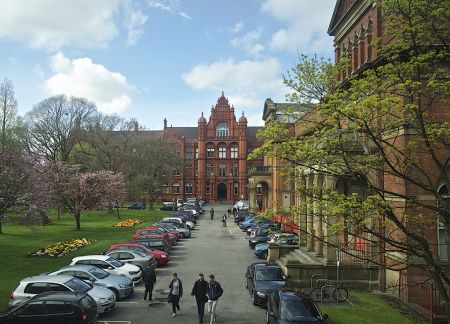
Chernobyl opens for virtual visits
Tuesday 19 April 2016
THE PEOPLE disappeared - but what happened to the animals after the world’s worst nuclear accident in Chernobyl 30 years ago this week?
A virtual reality exhibition staged by The University of Salford about the impact on wildlife of the disaster in the former Soviet Union is being held at the Museum of Science and Industry in Manchester this weekend - April 23 and 24.
Alienated Life tells the story of the animals – elk, moose, wolves, bears, birds and horses, which not only survived the nuclear fallout but actually thrived in its aftermath.
It presents film, photography and scientific data from the radioactive zone through an immersive virtual reality experience, ‘transporting’ visitors to the zone with Oculus Rift technology.
Meltdown
In the early hours of Saturday 26th April 1986, an explosion at Reactor 4 of the Chernobyl Nuclear Power Plant released unprecedented quantities of radioactive material into the environment. More than 116,000 people were evacuated from an area the size of Northumbria.
But what about the animals?
Dr Mike Wood, a reader in applied ecology at the University of Salford, who returns from his latest visit to Chernobyl on Saturday, said: “This is a story about the astonishing resilience of nature. Alienated Life at MSI allows people through virtual reality to ‘visit’ the ‘exclusion zone’ for themselves.
“What they see is not a barren, post-apocalyptic landscape but one of the few places on the planet that is getting wilder and more diverse.”
Human destruction
One of Mike's collaborators, Jim Smith, recently published data that show roe deer numbers increased by about 10 times by 1996, and wolf populations around seven times higher in the zone than in other comparable areas, which is likely to be, at least in part, down to the fact that nobody is hunting them.
Added Dr Wood, who has curated the exhibition with Professor Andy Miah and Simon Campion of ThinkLab, added: “Scientists have long suspected that that the impact of radiation on wildlife within the exclusion zone is much less than the impact of humans, through forestry, agriculture and construction. This exhibition begins to explain why in a very visual and engaging way.”
The Museum of Science & Industry’s purpose built Pi: Platform for Investigation offers visitors both young and old alike the opportunity to discover, marvel and explore the joys and the magic of the science all around us.
Launched in 2014 and continuing monthly, the Pi: Platform for Investigation offers free, drop in creative workshops led by leading scientists, artists, technologists and researchers. Each month they take to the platform to share their discoveries on a different theme - offering visitors a hands-on and creative learning experience.
The free exhibition will be open 23 - 24 April, from 10.30am - 3.30pm.
For more information, visit: http://msimanchester.org.uk/en/whats-on/activity/pi-platform-for-investigation
Or read Mike and Nick Beresford's article published in the latest edition of in The Biologist.





